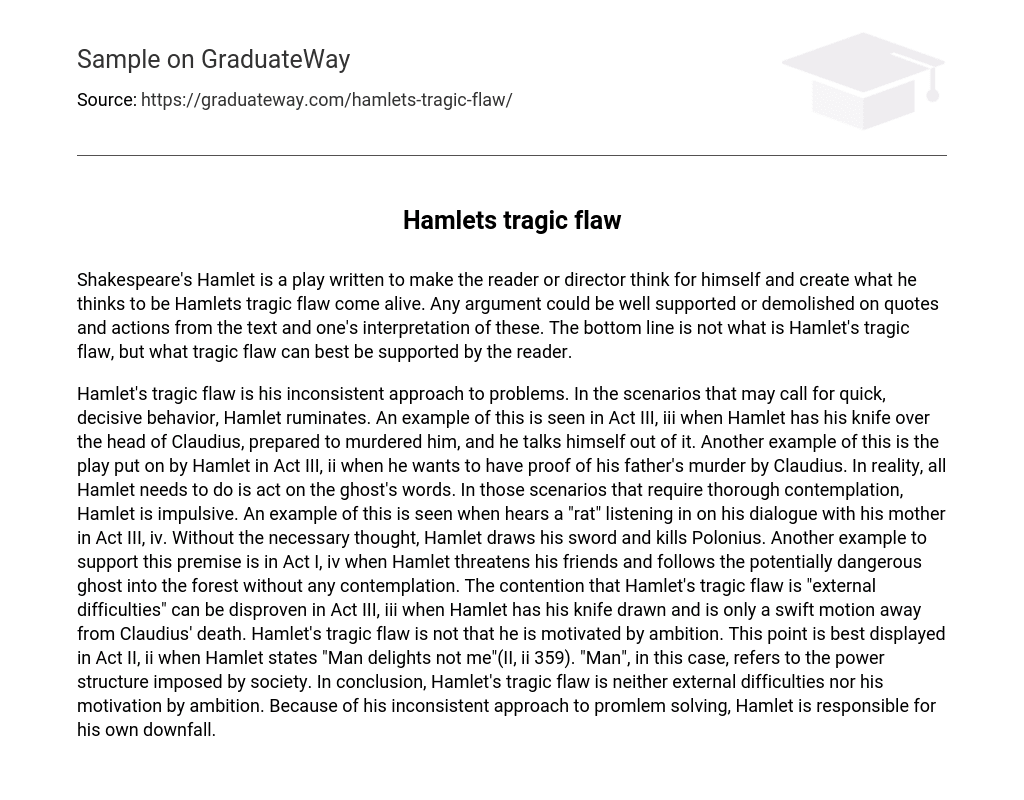Shakespeare’s Hamlet challenges the reader or director to independently analyze and bring to life what they perceive to be Hamlet’s tragic flaw. Various arguments can be made and dismantled by referring to quotes and actions from the text, as well as one’s own interpretation. Ultimately, the focus is not on determining Hamlet’s specific tragic flaw, but rather on selecting the tragic flaw that can be most convincingly defended by the reader.
Hamlet’s tragic flaw is his inconsistent approach to problems. In situations that require quick action, Hamlet tends to overthink. For instance, in Act III, iii, Hamlet has the opportunity to kill Claudius but talks himself out of it. Similarly, in Act III, ii, Hamlet puts on a play to gather proof of his father’s murder instead of simply acting on the ghost’s words. On the other hand, in situations that require careful consideration, Hamlet acts impulsively. In Act III, iv, upon hearing a noise while speaking with his mother, Hamlet immediately draws his sword and kills Polonius without thinking it through. Another example is in Act I, iv when Hamlet blindly follows the ghost into the dangerous forest without any contemplation. This disproves the notion that Hamlet’s tragic flaw is external difficulties. Furthermore, his flaw is not motivated by ambition as evidenced in Act II, ii when he declares “Man delights not me” (II, ii 359), referring to societal power structures. Therefore, Hamlet’s tragic flaw is neither external difficulties nor ambition-driven motivation.Hamlet’s own downfall can be attributed to his inconsistent approach to problem solving.





